If you have missing teeth, dentures are some of the simplest means of replacing them. They are removable appliances that you can wear in your mouth to replace some or all of your teeth. There are two types of dentures — full and partial dentures. Full dentures are meant for people who have lost all of their teeth, and these can give you a complete set. Partial dentures are meant for people who have lost some of their teeth. Contact us to determine if you are a candidate for dentures in Clute.
What Are Full and Partial Dentures?

Dentures are simply replacement teeth that are attached to a gum-colored or pink, plastic base that is connected to a metal framework that you wear in your mouth. This is a completely removable external appliance, but it takes the place of your actual teeth. There are two types of dentures — full and partial dentures.
Full dentures, as the name suggests, are a complete set of fake teeth. Partial dentures are replacement teeth if you’ve only lost a few but still have some intact. They are also useful because they prevent the surrounding, existing natural teeth from drifting or moving around, as they’re likely to do if you have some missing teeth.
Why Would Someone Get Removable Partial Dentures?
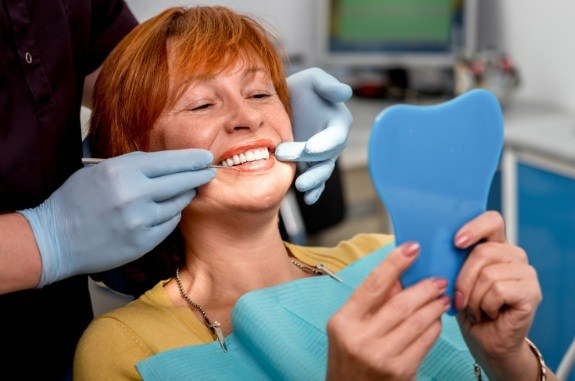
You can get removable partial dentures for a lot of different reasons:
-
You’ve already lost multiple teeth in a single arch, but there are still plenty of healthy teeth worth keeping.
-
You are looking for a tooth replacement solution that’s more affordable than dental bridges and implants.
-
You want a non-invasive way to replace your missing teeth without making alterations to the teeth you still have.
-
You need time to decide on a permanent solution for replacing teeth and need something to fill the space in the meantime.
How Much Do Partial Dentures Cost?

Partial dentures may seem like an expensive solution to some, but it’s far more reasonable than the alternatives. You can get metal partial dentures for $935 to $1,975, and flexible ones for $1,075 to $1,500. You can also get limited insurance coverage for partial dentures.
Partial Dentures Fitting Process
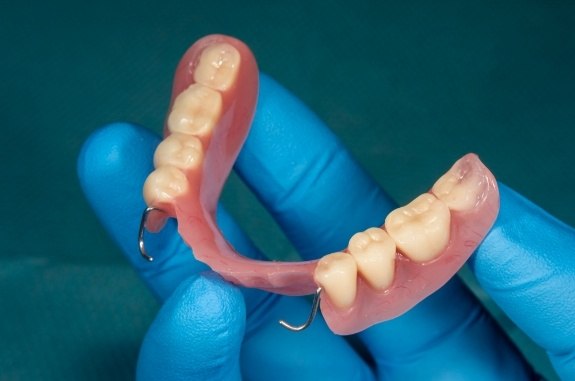
You need to go for an initial consultation so the dentist can decide if you need removable partial dentures and discuss all of your options. The following is an overview of the steps involved in the removable partial dentures fitting process:
-
The dentist will have to take an impression of your mouth by asking you to bite into a mold. The dentist will also gauge how your jaws interact with each other to replicate it in the dentures.
-
The dentist will send the mold and the measurements to a laboratory so they can create a wax mold or plastic model of the denture. You’ll have to wear the trial dentures so that the dentist can examine if they’re suitable for you. The dentist will then send any recommendations for changes to the laboratory, and they’ll prepare the final set of dentures.
-
In the next session, you’ll wear the dentures, and the dentist will demonstrate how to maintain them.
How Do Flexible Partial Dentures Feel?
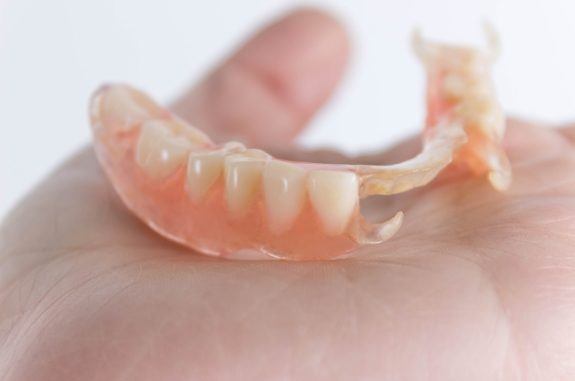
Initially, the sensation of the flexible partial dentures will be strange. Since you’ve never worn them before, they’ll feel unnatural and maybe a little uncomfortable. In some cases, you may also experience some soreness in your mouth, irritation, and you may salivate more than usual. Aesthetically, they’ll look just like real teeth, so they’re most likely to improve your cosmetic appearance.
How to Maintain Full and Partial Dentures
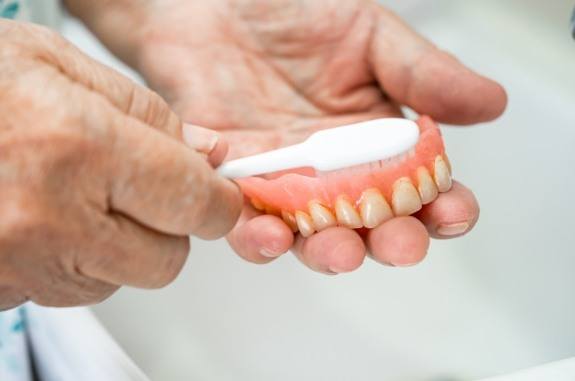
You should follow these tips to ensure your full and partial dentures remain strong:
-
When cleaning your dentures, make sure that the denture cleaner you use has been approved by the American Dental Association. Do not clean dentures with household cleaners or toothpaste; these substances could potentially damage your artificial teeth. You should always hold your dentures over a towel or a sink full of water so that they won’t be broken or hit the floor if you happen to drop them.
-
Brush your dentures with a soft-bristled toothbrush on a daily basis. This helps keep plaque from building up and reduces the risk of discoloration.
-
Take the time to clean your dentures after every meal to prevent them from becoming stained.
-
Keep your dentures moist at all times, even when they’re outside your mouth. If they dry out, they could potentially lose their shape and not fit properly anymore. When you take your dentures out at night, you should leave them soaking in a denture solution.
-
Always rinse your dentures under lukewarm water before putting them back in your mouth.
How to Adjust Partial Dentures
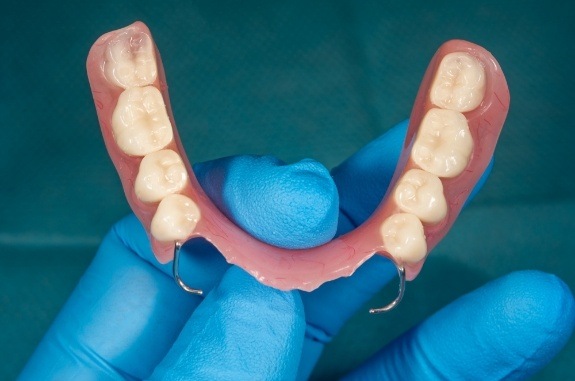
Adjusting flexible partial dentures is necessary once in a while because your body and mouth shape keeps changing over time. Based on how your mouth changes, the dentures will also need to be adjusted accordingly. If you don’t adjust them, they can harm your mouth by causing infections and sores.
When it comes to adjusting an ill-fitting denture, you should completely avoid over-the-counter DIY solutions because they are useless at best and harmful at worst. These solutions can damage your dentures, which can be a big expense for you. They can also be a health hazard to you. That’s why you should consult your dentist whenever your flexible partial dentures need to be fixed.
Partial Denture FAQs
Partial dentures in Clute can fill the gaps in your smile using a solution that looks natural. However, choosing a tooth replacement method is a big decision. Your dentist at Woodshore Family Dentistry will explain everything during your initial consultation. If you have any concerns, take a look at the answers to the most frequently asked questions below. You can also contact our office.
Can I Sleep with a Partial Denture in My Mouth?
Does an Upper Partial Denture Cover the Palate?
How Long Do Partial Dentures Last?
Should I Have Sore Spots on My Gum?
Can I Use My Dental Insurance for a Partial Denture?
Although no one wants to get caught without a complete smile, your denture dentist in Clute will recommend removing it at night. Your gums and teeth need a break from supporting your prosthetic. Not to mention, your partial can obstruct proper saliva flow, which can increase plaque buildup that can lead to tooth decay or infections. An overgrowth of oral bacteria can also cause unpleasant odors and weaken your partial over time.
You don’t have to worry about an upper denture covering the roof of your mouth. Modern advancements in dentistry have allowed partials to have a horseshoe shape. You’ll benefit from the same aesthetics and functionality as a prosthetic that covers the palate, but you won’t have to worry about any discomfort.
A partial denture can last for 7-10 years before needing to be replaced. Many factors will affect the lifespan of your prosthetic, like how well you care for it. Besides brushing and flossing, clean your partial after eating and place it in an overnight soaking solution to kill bacteria. Although your partial denture will be strong, limit your consumption of hard and chewy foods. Don’t forget to schedule a cleaning and checkup with your dentist every 6 months. You’ll keep your mouth healthy and get the most from your investment.
You should not have any sore spots or irritation to your gums. This can be a sign of gum disease, which causes red, swollen, and bleeding gums. Pressure sores or irritation can develop if your partial no longer fits correctly, which can lead to infections. It’s best to schedule an appointment with your dentist. They’ll make the adjustments necessary to ensure a comfortable fit.
It’s unlikely your dental insurance will cover the entire cost of a partial, but you can use your benefits to lower the amount you’ll pay out-of-pocket. Your dental insurance can pay some of the expenses for your consultation and diagnostic services. After meeting your annual deductible, you can use your yearly allowances to lower the cost of any preparatory procedures and your partial denture. We will work on your behalf with your dental insurance to maximize any applicable benefits. We offer various financial solutions to keep a complete smile affordable, like a monthly payment plan through CareCredit.









